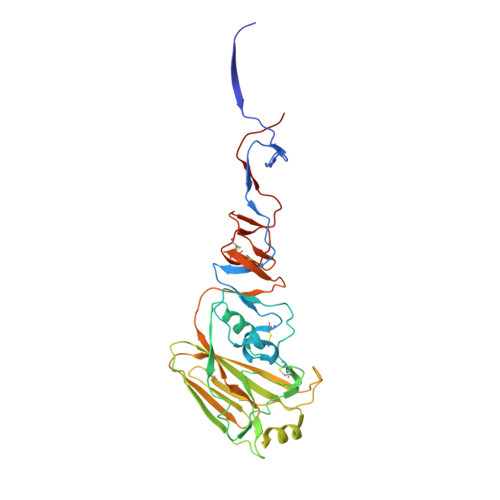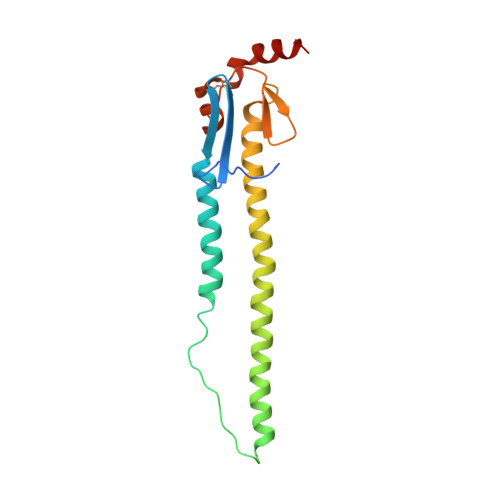Structural and antigenic variation among diverse clade 2 H5N1 viruses.
Shore, D.A., Yang, H., Balish, A.L., Shepard, S.S., Carney, P.J., Chang, J.C., Davis, C.T., Donis, R.O., Villanueva, J.M., Klimov, A.I., Stevens, J.(2013) PLoS One 8: e75209-e75209
- PubMed: 24086467
- DOI: https://doi.org/10.1371/journal.pone.0075209
- Primary Citation of Related Structures:
4KTH, 4KW1, 4KWM - PubMed Abstract:
Antigenic variation among circulating H5N1 highly pathogenic avian influenza A viruses mandates the continuous production of strain-specific pre-pandemic vaccine candidates and represents a significant challenge for pandemic preparedness. Here we assessed the structural, antigenic and receptor-binding properties of three H5N1 HPAI virus hemagglutinins, which were recently selected by the WHO as vaccine candidates [A/Egypt/N03072/2010 (Egypt10, clade 2.2.1), A/Hubei/1/2010 (Hubei10, clade 2.3.2.1) and A/Anhui/1/2005 (Anhui05, clade 2.3.4)]. These analyses revealed that antigenic diversity among these three isolates was restricted to changes in the size and charge of amino acid side chains at a handful of positions, spatially equivalent to the antigenic sites identified in H1 subtype viruses circulating among humans. All three of the H5N1 viruses analyzed in this study were responsible for fatal human infections, with the most recently-isolated strains, Hubei10 and Egypt10, containing multiple residues in the receptor-binding site of the HA, which were suspected to enhance mammalian transmission. However, glycan-binding analyses demonstrated a lack of binding to human α2-6-linked sialic acid receptor analogs for all three HAs, reinforcing the notion that receptor-binding specificity contributes only partially to transmissibility and pathogenesis of HPAI viruses and suggesting that changes in host specificity must be interpreted in the context of the host and environmental factors, as well as the virus as a whole. Together, our data reveal structural linkages with phylogenetic and antigenic analyses of recently emerged H5N1 virus clades and should assist in interpreting the significance of future changes in antigenic and receptor-binding properties.
Organizational Affiliation:
Influenza Division, Centers for Disease Control and Prevention, Atlanta, Georgia, United States of America.
















